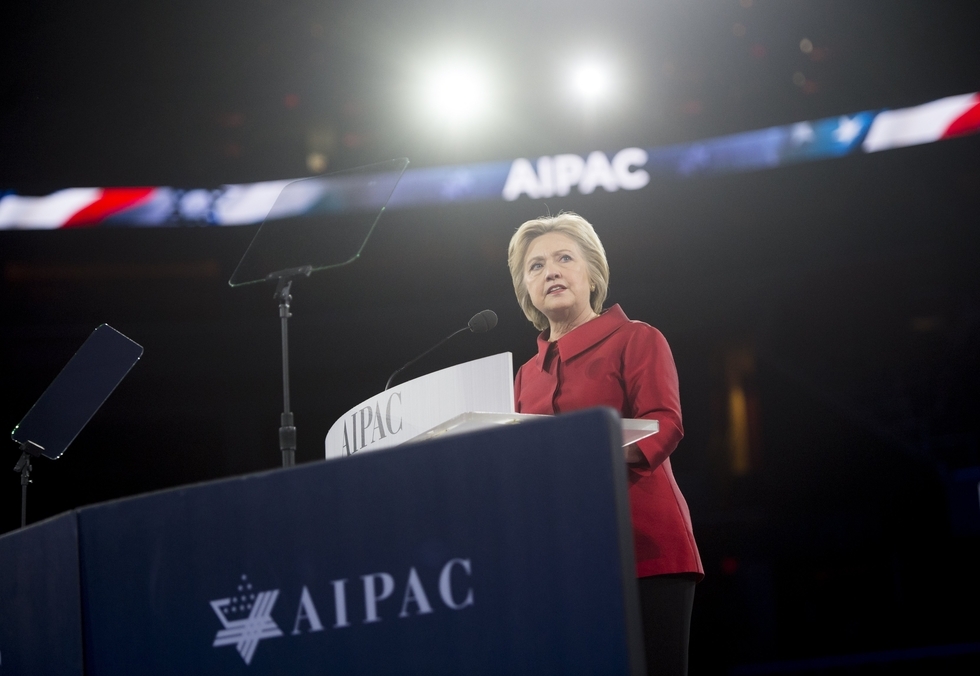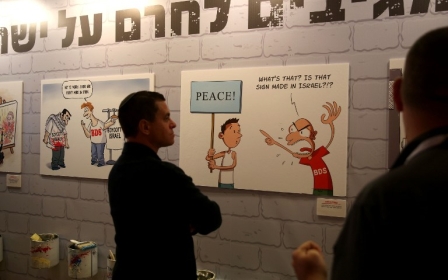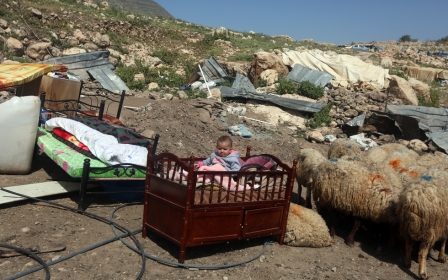Dear Hillary, destroying BDS will lead to more bloodshed in Palestine

US presidential frontrunner Hillary Clinton used the Jewish religious holiday of Passover to not only emphasise her uncritical support of the apartheid state of Israel, but also as a shameless opportunity to conflate the boycott, divest, sanction (BDS) movement as anti-Semitic – even comparing boycott Israel activists with the biblical Pharaoh and synagogue vandals.
The day after Clinton’s op-ed was published in the Israeli newspaper Times of Israel, a bomb ripped through a passenger bus in West Jerusalem, injuring at least a dozen Israelis.
While no pro-Palestinian group or individual has yet taken responsibility for the attack, a line can be drawn between Secretary Clinton’s naked ambition to destroy the BDS movement, an escalation in Palestinian violence, and maybe even yesterday’s bombing.
Outside of repeated and failed efforts to petition the United Nations, BDS remains the last non-violent tool for Palestinians to bring Israel into compliance with the Geneva Convention, multiple UN resolutions, and a multitude of other frameworks otherwise known as international law. On no less than a half-dozen occasions, including even a personal letter to pro-Israel billionaire Haim Saban, Clinton has promised to take away the Palestinian national liberation cause’s only non-violent pathway to peace.
Political hopelessness leads to terrorism and violence. In the 1970s, Palestinian liberation groups, having been abandoned by Arab states following Israel’s 1967 war against Egypt, Jordan, Syria, and Iraq, turned to plane hijackings, political assassinations, and bombings to resist Israel’s occupation of the Palestinian territories.
By the early 1980s, however, Palestinians became hopeful that multilateral efforts to negotiate peace would advance the cause of Palestinian sovereignty. "Sometime in the mid-1970s the term peace process became widely used to describe the American-led efforts to bring about a negotiated peace between Israel and its neighbours,” writes William B Quandt in his book Peace Process.
Israel, however, did not reward the Palestinians for their efforts to turn away from violence and towards international led diplomacy. From 1980 to 1987, the number of Israelis living illegally in the Palestinian territories doubled from 100,000 to more than 200,000 settlers. In other words, the Palestinians were punished for choosing a non-violent, diplomatic route to ending the occupation.
Frustrated and humiliated by an ever-broadening Israeli occupation of the Palestinian territories, the Palestinians again turned to violence to break the status quo – culminating in the First Intifada (1987). What began with Palestinian children throwing stones at Israeli tanks and checkpoints, finished with the first Palestinian suicide bombing attack in 1989 – with many impartial observers laying blame at the feet of Yitzhak Rabin, who was then the minister of defence, for escalating the violence, especially after promising to break the knuckles of Palestinian children throwing stones.
Israel’s brutal put down of the first Palestinian uprising was successful in convincing Palestinians that violence would not bring about an end to the occupation. This reality ultimately led Yasser Arafat to sign a letter of mutual recognition in 1993 with Israel, which set the stage for the US led Oslo Peace Accords. In the letter, Arafat wrote, “The PLO recognises the right of the State of Israel to exist in peace and security….the PLO renounces the use of terrorism and other acts of violence.”
Arafat not only acknowledged the legitimacy of the Israeli state, but also the legitimacy of 1967 borders. “For the Palestinians, the 1967 borders are the compromise that cannot be further compromised,” said the former head of the Palestinian Authority’s communications department. “And I think this is a very important point. This is a very problematic defect in the peace process. The Israelis keep coming back and saying, ‘Why don’t you put a counterproposal forward?’ And we are saying, ‘Well, you see, there’s no need for us to. We don’t have a counterproposal because we don’t basically accept where you’re coming from'.”
The Palestinian “compromise” paved the way for the Oslo Accords in 1993. Seeing hope in a politically negotiated peace settlement, Palestinian terrorist attacks fell to approximately two per year in the period 1993 to 1999. But by 2000, it again became obvious to Palestinians that Israel was giving only lip service to a two-state solution – as evident by the fact that the number of Israeli settlers increased from 300,000 to 400,000 in the first seven years following Oslo.
“If Israel were serious about the creation of an independent Palestinian state, why would it expropriate and assist new settlements on the land destined to compromise the territory of that new state?” asks Padraig O’Malley in The Two State Delusion.
Regardless, the Palestinians continued to place their faith in the Clinton administration, believing US pressure would put an end to Israel’s occupation, or at the very least put a halt to settlement construction. This pressure never came, thus leaving the 2000 Camp David talks and the peace process in tatters.
Once again, accords, treaties, talks, and negotiations had failed to not only bring about a Palestinian state, but also did nothing to halt the Israeli settlement enterprise. When Israeli Prime Minister Ariel Sharon entered the Temple Mount on 28 September, 2000, surrounded by a mass of heavily armed Israeli soldiers and declared, “The Temple Mount is in our hands and will remain in our hands,” Palestinian resistance launched the Second Intifada (2000), which triggered a half-decade wave of violence. From 2001 to 2004, there were, on average, more than 25 Palestinian terrorist attacks per year.
While Hamas’ pledge to end terrorist attacks against Israeli civilians did much to reduce the total number of attacks over the course of the past five years, the emergence of what many are calling the Third Intifada is underwritten by a Palestinian population that has lost faith in a US brokered two-state solution, and one that again sees violence as the only avenue to ending Israel’s brutal occupation of the West Bank and East Jerusalem, and its blockade of Gaza.
Founded in 2005, the BDS movement aims to mimic the success of the boycott movement that ended apartheid in South Africa, peacefully. That success was built upon the realisation that boycott, sanctions, and divestment would place too high an economic price tag for South Africa maintaining its human rights violations.
If Palestinians are denied non-violent avenues to resist occupation and seek self-determination, as Clinton aims to do, then the lesson from history is clear: both Israelis and Palestinians can expect more bloodshed.
- CJ Werleman is the author of Crucifying America (2013), God Hates You. Hate Him Back (2009), and Koran Curious (2011), and he is the host of Foreign Object. Follow him on twitter: @cjwerleman
The views expressed in this article belong to the author and do not necessarily reflect the editorial policy of Middle East Eye.
Photo: US Democratic presidential hopeful former Secretary of State Hillary Clinton speaks during the American Israel Public Affairs Committee (AIPAC) 2016 Policy Conference at the Verizon Center in Washington, DC, on 21 March, 2016 (AFP).
Middle East Eye propose une couverture et une analyse indépendantes et incomparables du Moyen-Orient, de l’Afrique du Nord et d’autres régions du monde. Pour en savoir plus sur la reprise de ce contenu et les frais qui s’appliquent, veuillez remplir ce formulaire [en anglais]. Pour en savoir plus sur MEE, cliquez ici [en anglais].





